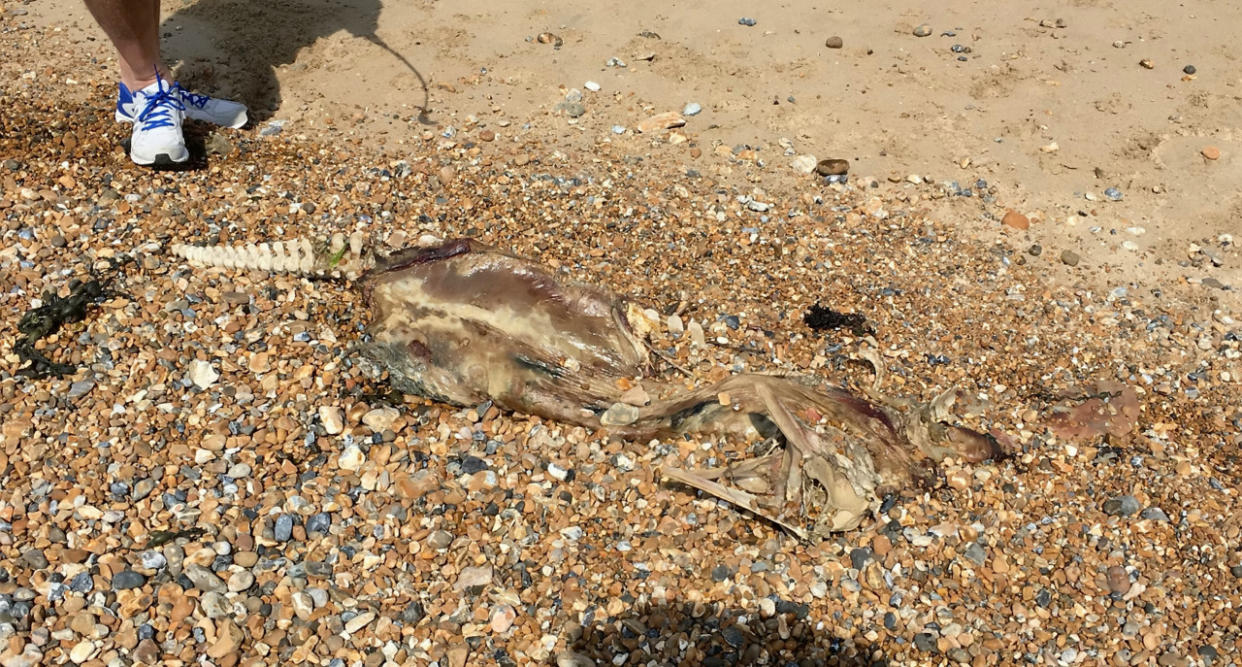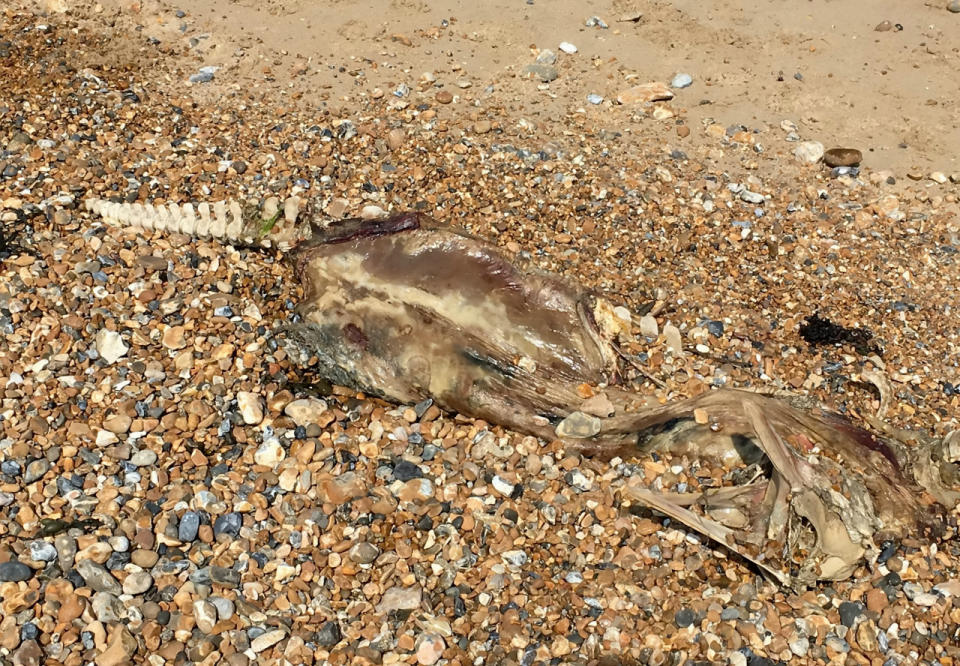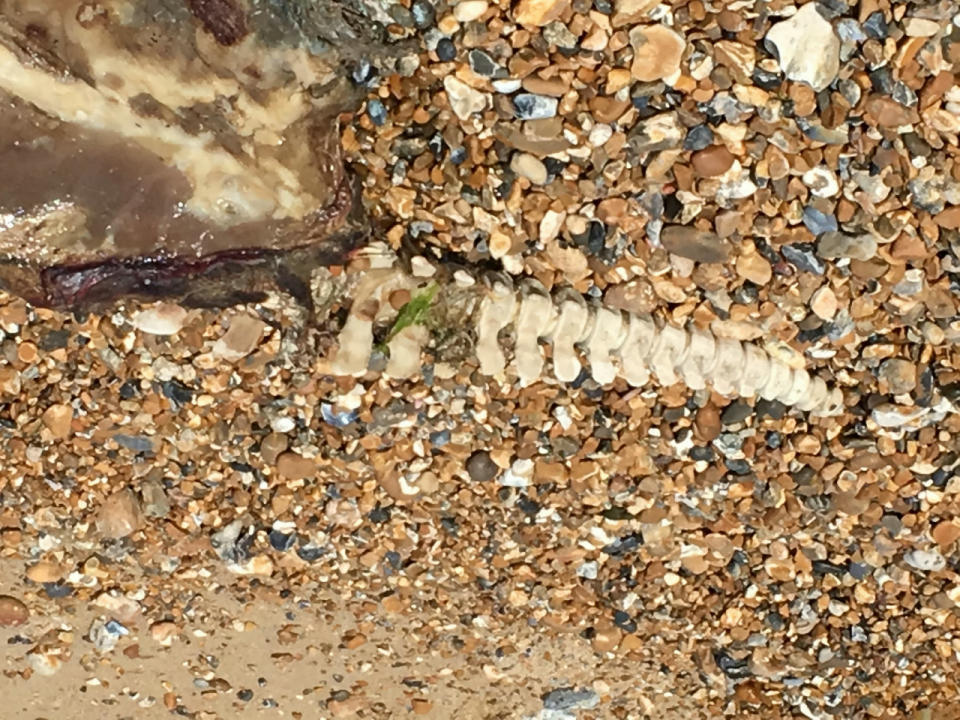Large Bone Remains Of Mystery ‘Dinosaur-Like’ Creature Found On Kent Beach

The mystery remains (SWNS)
For a dog it may be the greatest find of the century.
A Labradoodle on a beach in Kent has unearthed the large bones of a mystery ‘dinosaur-like’ animal while walking with its owner at the weekend.
The dog’s owner and voiceover artist Shirlie Randall says she does not know what the animal was and has even gone online to appeal for help.
Suggestions included a dinosaur or, most likely, a porpoise.
The remains were discovered on Sunday.
Shirlie was walking on Long Rock Beach, Whistable, when her Labradoodle Benji began to roll in something on the ground.
The mum-of-one ran over to see what was happening and discovered the remains of a human-like spine and a crocodile-like body.
‘Benji was running down the beach and then he just started rolling in something,’ she said.
‘I walked over to see what it was, but I’ve got no idea what it was. It was bigger than a dog. I didn’t know what it was.
“It was the face that was really strange. It seemed to have a long beak. So, it looked like a bird or even a dinosaur.
‘It did smell bad and just under the neck there was a kind of jelly, which must have been rotting flesh.’

The bones were found on Long Rock Beach in Kent (SWNS)
Shirlie posted the images on Facebook to try and get an answer.
‘We had people saying that it was a dead dog and even a dinosaur. None of them were sensible suggestions.’
However, Shirlie said she didn’t believe the beach where the skeleton was a hot spot for paleontologists.
After tiring of the online suggestions, Shirlie turned to a friend who said the animal could be a porpoise.
‘I think that probably was the most sensible guess,’ she said.

The mystery animal’s tail (SWNS)
But the remains are still a mystery.
The British Divers Marine Life Rescue could not find any distinguishing marks and was unable to clarify exactly what it was.
A BDMLR spokeswoman said: ‘It is most likely to be a porpoise as they wash ashore fairly often, otherwise it would be a dolphin.
‘It all depends on the thickness of the vertebra which from the photos is impossible to tell. Whatever it was, it has been dead for a long time.’
A Natural History Museum spokesman said: ‘It is difficult to identify cetaceans from low-quality photography, but from the shape of the carcass skull this would appear to be a porpoise.’

 Yahoo News
Yahoo News 
